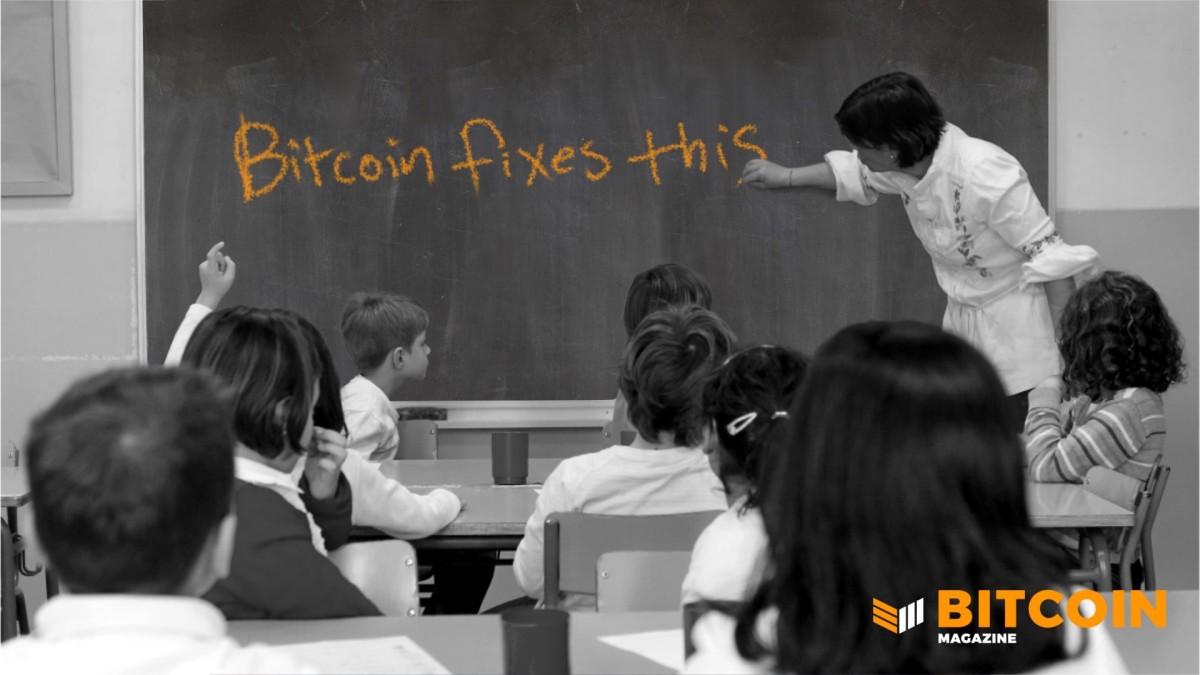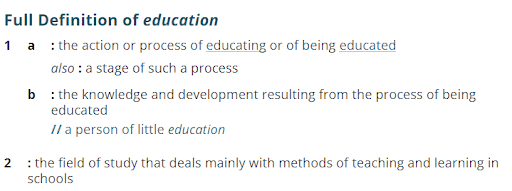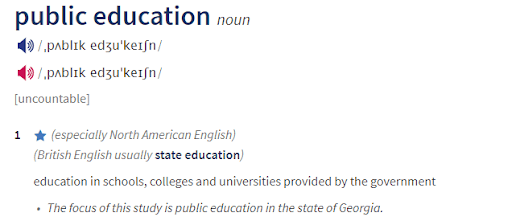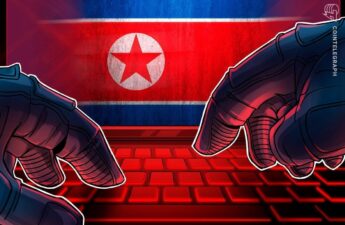How do we define “education”? Is it something that can only be provided by a structured institution or certified individual (such as a teacher, or professor)? Do our parents and friends not teach us?
Is it something an individual builds, or is it something one receives? Do we discover education, or do we mold it? Is it something that we grow? It isn’t tangible, yet, can you not receive it, exchange it and develop it?
Education does not exist within the world of atoms, nor within the plane of bits. Yet, it is so real that we can construct an education, we can gift an education to others (and vice versa), and it can be fostered to grow within our youth.
Education has been one of the most important pillars of civilization and has enabled humanity’s ascent throughout history in our quest of reaching for the stars. To have such lofty dreams — to actually dare to reach for the stars — we could not do so without understanding how our universe operates, to the effect that we may learn to manipulate our surroundings so that we may produce a world that we desire to occupy.
Through an education, we can uplift the minds of our youth so that they may be capable of finding a better path forward in the future for problems that may arise — both as matters of our own making, as well as events that arise from the machinations of life progressing without regard to our presence.
I Fear For Our Youth
I bring up this topic because I am afraid of the current position we find ourselves in.
Yeonmi Park discussed her story with Jordan Peterson on his podcast (which is linked here) about how she found her way from the depths of the North Korean nation all the way to the shores of the United States of America. She attended Cambridge University, and encountered a level of resistance to free thought that is “alarming,” to say the least, so much so that Park has come to the conclusion that her time spent at the university was a waste of time and resources.
What is the point of providing educational institutions when the social environment is disincentivizing their own teachers and students from partaking in free speech and free thought?
How did we get here? How did the western world, which has been purported as a beacon of freedom and opportunity, wind up in a position where our institutions are actively silencing narratives/positions that challenge popular thought? How can a people actually hope to develop new technologies and new solutions to new problems without equally new thought.
Notice how that last line was not a question. You cannot get a new solution without a new approach, or new way of thought, which also mean opposing opinions with the resolution being found within the collisions of conflict.
I personally have gotten very curious, and I have found myself returning to a book which I have found myself revisiting many times in the past 24 months: “Tailspin” by Steven Brill. The path throughout history is extremely nuanced and clouded with government legislation, civil battles, political strife and shifting cultural norms. I invite you to follow a journey that meanders through topics that will likely bore you to tears, but need to be acknowledged and reviewed, so we can do our best to avoid similar scenarios in the future.
I do not intend for the content of this paper, or the research cited, to be interpreted as works of my own. The only service I am providing is to (hopefully) arrange these details in a manner that is easily digestible so that you can be as awestruck as I was, once these dots connect.
Ivory Towers And Entrenched Positions
Brill gets after it and begins discussing the education problem in chapter two. In order to find the answer(s), or at least provide possible justifications for how it is we got in this predicament, we first look to the ’60s.
Specifically, we look at a man by the name of Russell Inslee Clark, Jr., former dean of admissions at Yale and the person responsible for revolutionizing Ivy League admissions strategy.
After the end of WWII, America’s best and brightest returned home from the war, and in the decades following, had established a minor aristocracy among the upper echelons of socioeconomic hierarchies. This is not (or should not be) surprising in the least; theoretically, men and women hardened by conflict can be effective businessmen and leaders, as opposition may not deter them as easily as it would other civilians. This was also made possible by developments in standardized aptitude tests that colleges began to require in the late 1930s. Clark intended on disrupting this dynamic.
What Clark did at Yale was to cease taking admissions from wealthy underachievers, and instead he sought to give the most capable and hardworking from those with impoverished status a chance at something greater. What this did at the time was arguably a great thing — Clark seemed to be evening out the playing field of academia within the wealth inequality gap. However, what he did not foresee was how those very intelligent boys and girls would position themselves later.
Following are a number of quotes from a Yale Law School graduation speech given by Daniel Markovitz in 2015, which most accurately detail what Clark’s meritocracy metastasized into, “where he claimed that in earning a degree from ‘the country’s most selective law firm… actually marked their entry into a newly entrenched aristocracy that had been snuffing out the American Dream for almost everyone else,’” Brill wrote, citing Markovitz’s speech.
“Elite lawyers’ real incomes,” he said, “have roughly tripled in the past half-century, which is more than ten times the rate of income growth experienced by the median American.”
“But it is perhaps… more surprising still to learn that the top 1% of earners, and indeed even the top one-tenth of 1%, today owe fully four-fifths of their total income to labor. That is unprecedented in all of human history: American meritocracy has created a state of affairs in which the richest person out of every thousand overwhelmingly works for a living.”
–Daniel Markovitz, Source: “Tailspin”
In short, the new aristocracy was those who worked the hardest and smartest, not those who inherited the most.
“Elite lawyers’ incomes will place you comfortably above the economic dividing line that comprehensively separates the rich from the rest in an increasingly unequal America,” Brill wrote.
So, what does this mean exactly? Well, consider for a moment how much harder you defend that which you’ve worked hard to earn, versus defending that which was given to you. If you’ve sacrificed precious time, sweat, and blood to earn a position in the clouds, I would imagine you would not kindly give it up. You would entrench your elevated position, and defend it. Not only for your own gain, but for your offspring, your family, and those you hold dear. Markovitz continued…
“This structure, whatever its virtues, also imposes enormous costs. Most obviously, it is a catastrophe for our broader society — for the many (the nearly 99%) who are excluded from the increasingly narrow elite.”
“Brewster and others embraced meritocracy self-consciously in order to defeat hereditary privilege, but although it was once the engine of American social mobility, meritocracy today blocks equality of opportunity. The student bodies at elite colleges once again skew massively towards wealth.”
“The excess educational investment over and above what middle-class families can provide that children born into a typical one-percenter household receive is equivalent, economically, to a traditional inheritance of between $5 [million] and $10 million per child. Exceptional cases always exist… but in general, children from poor or even middle-class households cannot possibly compete… with people who have imbibed this massive, sustained, planned, and practiced investment, from birth or even in the womb. And workers with ordinary training cannot possibly compete… with super-skilled workers possessed of the remarkable training that places like Yale Law School provide.”
–Daniel Markovitz, Source: “Tailspin”
And here, Markovitz began to truly lay out how these entrenched positions come about, how the disruptors end up becoming the incumbents, the very system that they sought out to destabilize. Which is precisely the dynamic we’ve been witnessing today with the antitrust hearings involving tech companies such as Google, Facebook and Twitter.
“American meritocracy has thus become precisely what it was invented to combat… a mechanism for the dynastic transmission of wealth and privilege across generations. Meritocracy now constitutes a modern-day aristocracy, one might even say, purpose-built for a world in which the greatest source of wealth is not land or factories but human capital, the free labor of skilled workers.”
–Daniel Markovitz, Source: “Tailspin”
So, Markovitz quite effectively layed out just how the 2015 Yale Law graduates had taken their first steps into a lifestyle amongst the American Elite that were effectively working to undermine efforts of the lesser classes to enter their ivory-laden existence. However, this isn’t the whole story.
I’m a big fan of observation, and I can tell you that I personally do not believe that each and every one of these individuals (and families) acted in these ways with nefarious intentions. That being said, what I do believe is that the human species is very good at iterating and gaming established rule sets in order to gain a benefit. This is where I want to go next.
The Great Game
In the United States of America, public school systems are maintained by way of taxes. This includes a combination of income taxes, federal and state taxes, property taxes and some fees sprinkled into the mix. With the vast majority of tax funding coming from local municipalities from the state to county and city levels.
So, this essentially means that public school systems are funded by government — while it is “only” on the state level it is still a form of government. Which has its own problems when you consider how socialist regimes operate and why they trend toward failure. But I want to lay out the path by which we have gotten here, and again I am leaning on Brill’s work.
Our journey begins in 1883 with the Civil Service Reform Act (aka, the Pendleton Act). What this act did was to require standardized competency tests for federal civil servants, allowing hiring to be based on merit — which I think we could all agree would be a positive. I’m not here to claim that employment competition shouldn’t be based on merits of the individual. However, let’s look at how this system has been progressively been gamed over the life of the United States.
Fast forward about 90 years to 1978 with the Carter presidency. Here we get the introductions of: one, the Office of Personnel Management (OPM) and two, the Merit Systems Protection Board (MSPB).
These two offices tacked on additional rules to the hire/fire process of civil servants. What was added was a category designed to attempt to identify the best employees and to improve the efficacy of performance reviews, with the intent of encouraging the high-quality workers to seek positions more “deserving” of their work ethics (labeled “senior executive service”). Again, I (and I’m sure many of you as well) would argue that this sounds like a general positive, which is likely how it gained public support.
The next step is actually a small step backwards in time, specifically, 14 years prior. A man by the name of Charles Reich wrote an essay in 1964 that was titled “The New Property.” In his essay, Reich argued that benefits and programs provided by holding a civil servant employment position should be treated equally as private property.
What this implies is that if you’re employed by the government, your benefits (and by association your employment) shouldn’t be subject to termination/removal without proper justification. Again, this remarkably sounds like a benefit, right? This (to me) sounds like a level of protection for employees from any possible “good ol’ boys club” dynamics from within government employment leadership.
Ok, so let’s recap. We have the establishment of the beginnings of a meritocratic system with the Pendleton Act of 1883, with civil servant employment being recommended to be treated as private property by Reich in 1964, and the meritocratic hiring processes being further strengthened by the OPM and MSPB in 1978, under President Carter.
Over the course of roughly four-score-and-seven years, the relationships of these mechanisms continued to get gamed within the judicial system culminating in a case that Brill outlines in great depth. What we are looking at here is a case in 2016 involving a woman by the name of Sharon Helman. Helman was appealing a case in which she was charged with a failure to practice proper oversight in her position managing the VA hospital in Phoenix, Arizona, where the waiting list lines and phony record-keeping under her watch were the foundation for a 2014 scandal.
The resulting outcome of this specific appeal concluded that the charge brought against her did not accurately specify what kind of oversight she was expected to perform in her position as manager of the VA Hospital of Phoenix. By the way, those phony records involved in the 2014 scandal were those very performance reviews established by, you guessed it, the MSPB and OPM. The performance reviews showed exemplary service provided by the administrative staff, yet the data reflecting wait list times and falsified record-keeping suggested otherwise.
“Mike, when does this become relevant to education? You are taking forever and dancing around all of this history. It’s so long, and taking forever.”
We’re almost there, I promise.
So, when an individual gets removed from a government position, they are legally allowed to appeal this movement — in the intent of protecting those who may have been fired without proper justification. When an individual appeals their termination from a civil servant position, there’s this neat little system where the state government foots the bill (partially dependent upon the outcome of the case).
But it isn’t just footing the bill for the court fees. State governments also pay the appellant their salary while waiting for their hearing(s), as well as outcome, as Brill noted.
(As an aside: In June of 2017, President Trump signed a law with overwhelming support by both parties cutting back the civil service protections of those at the VA categorized as senior executives, per Brill).
Ok, so where all of these mechanisms come to relevance for the education system get tied back in is through yet another publication by Brill. In a 2009 article published with The New Yorker, Brill describes his discovery of “rubber rooms.” These rooms were facilities where teachers deemed incapable by New York City’s department of education were housed during normal work hours. New York’s civil service laws and union contracts kept all teachers awaiting arbitration hearings on the state’s dime. According to Brill, these teachers would remain on the state’s payroll for anywhere from two years to upwards of five while they waited for the backlog of arbitration hearings to clear.
How is it that this system was allowed to proliferate? Well, the combination of MSPB and the OPM made for a quite-powerful mix when weaponized by the teachers union(s).
“[The] United States spends more per capita on public K-12 education than most other developed countries, yet its student achievement scores rank well below the countries long considered America’s rivals,” Brill pointed out.
Unfortunately, this system could be leveraged in urban and metropolitan areas of the country. The reason being that unions tend to be more popular and have significant political pull in areas that are low-turnout and dominated by democratic candidates.
In these types of environments, public employee unions are incentivized to provide significant support for left-leaning party candidates that will, in turn, be incentivized to provide political (and economic) support to the union(s) that assisted in their election. This dynamic would essentially allow for unions to strategically position politicians that would be inclined to support their actions — like the appointment of arbitrators to appellant cases regarding termination of government employees over “implied” incompetence or “poor” performance.
Let’s recap again:
We have unions leveraging due process and government employment being treated as private property, justified by the MSPB and OPM, and rooted in the Pendleton Act, all of which is being paid for by the taxpayer. And, according to Brill, these appellant cases largely resulted in settlements or reinstatements, rarely ever terminations. Meaning the vast majority of the court costs and salaries were footed by the state, which directly means the taxpayer.
Who Pays The Greatest Price?
I’ve laid out this very complicated string of mechanisms for a very specific reason. Well, actually a few reasons. I outlined how the gamification of this system is costing the taxpayers insurmountable amounts of money that are literally getting wasted away. But there are even more grave implications between the lines here.
These teachers that are being initially terminated, (let’s assume for argument’s sake that their termination was justified), who are being reinstated based more on legal technicality and less on merit, are going back and “teaching” our youth, particularly In urban and metropolitan areas where poverty and poor education are very real and proliferant issues.
When we allow these individuals to return to these environments without recourse, how likely do you believe it is that they change their ways? There’s nowhere along this process that incentivizes these individuals to actually work towards being better teachers, they just got terminated, paid to chill, and reinstated, all while maintaining their pay and benefits. There’s no punishment involved.
How does this affect the students? Do the students benefit? No. Do the parents (the taxpayers) benefit? No.
The low-quality teachers, the politicians, the unions, and the arbitrators benefit, all while the children not only pay the cost of incompetence by way of being forced to tolerate impotent teachers, but they grow up in a reality where they lack the education to have any competitive edge in a university, let alone the job market, and worse yet, they inherit a country’s debt burden (which has no chance of slowing down).
On top of that, when our public schools are directly funded by way of taxes, the government itself plays a very strong role in what is being taught within our schools. He who wields the money printer carries the big stick.
The past 20 years have been a pretty strong indication of who controls the printer: the Federal Reserve. And who can influence the Federal Reserve? Congress, the White House, and even more importantly now than ever, the market (including equities markets as well as the bond market).
When taken into consideration, there are a lot of hands that can play a role in determining what is taught by public schools. But the real question is: Are they the right hands? Do we honestly believe that politicians, lawyers, and bankers know how to teach best? Or what is best for the students of a socioeconomic status that they haven’t personally been immersed in for decades, if ever?
What is one symptom of bureaucracy? The stifling of innovation, and the resistance to new ways of thought. Mix that with the unlimited printing capabilities of the Federal Reserve and you get a powder keg of compounding powers to not only resist change but perpetuate a significantly flawed and failing system, at the cost of our youngest.
Our country and our leaders continue to sacrifice our children, and their futures, upon the altar of a falsified reality where America is still considered the “greatest in the world.” Real leaders wouldn’t offer up the futures of their children on a silver platter to their friends for the sake of holding on to the comforts of their positions.
We should be sacrificing our immediate comforts to build a foundation for which a brighter tomorrow can be built — if not to be enjoyed by our children, then built by them. That is the whole point to doing anything of value with our short lives we are given.
“Nemo vir est qui mundum non reddat meliorem.”
Our youth are an opportunity for us to be better than we were in our time.
Creating A Better Tomorrow
How do I propose we do this? If you’ve been following my writings for Bitcoin Magazine, I’ve laid out multiple mechanisms, much like this education system, where I believe we can ameliorate the rot that has our people in its clutches. Bitcoin provides a salve for many, many problems of today.
With a hard, sound money, we can at the very least limit the rate at which such corruption can gain a foothold. The game by which the education system is plagued would have far greater difficulty in funding the appellant cases, the unions, the arbitrators, and paying the salaries of teachers in question if there weren’t a system arguing for greater and greater funding where their allies are the opposition at the negotiating table.
The fiat dollar doesn’t just allow for these fake and shallow systems to exist. It incentivizes the individuals that get welcome into the inner-circle of this machination to perpetuate it, by gleaning on them the capability to entrench their loved ones within the walls of protection that a fraudulent monetary policy can provide.
You have to give them credit, it’s a pretty effective scam.
This is a guest post by Mike Hobart. Opinions expressed are entirely their own and do not necessarily reflect those of BTC Inc or Bitcoin Magazine.






